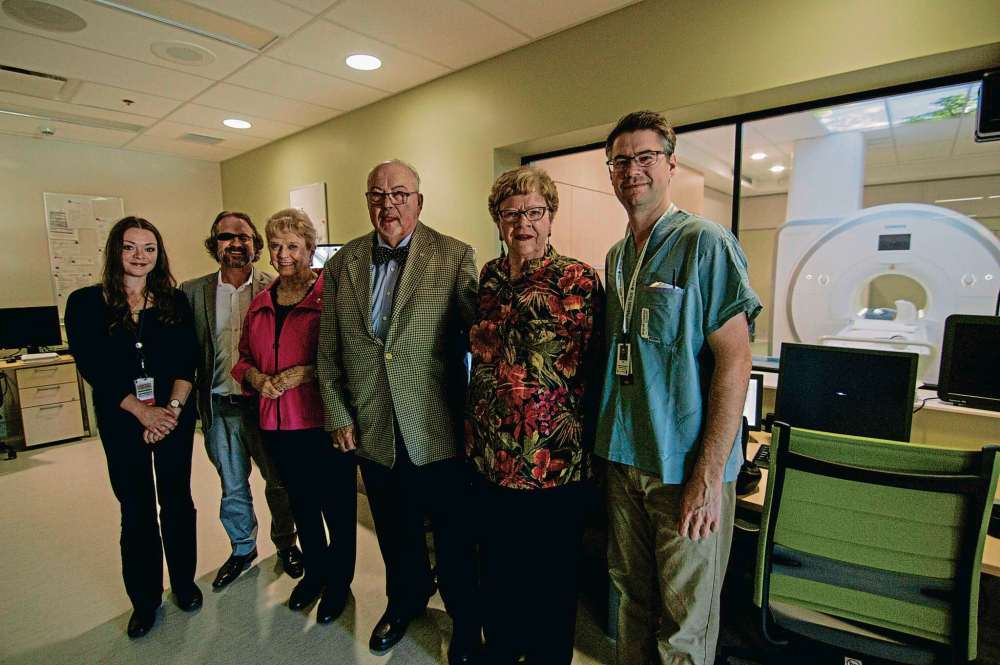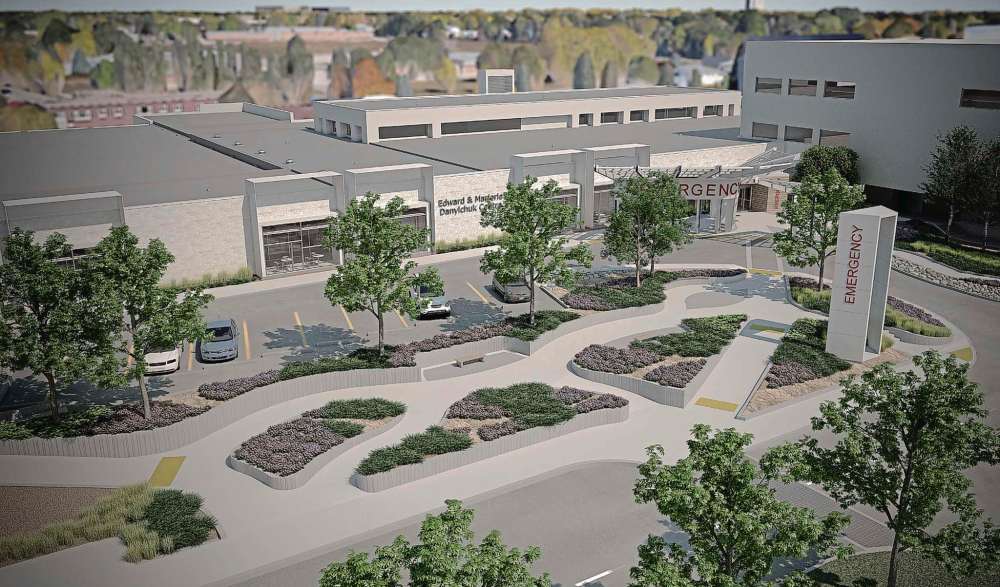New MRI facility in high demand
Danlychuks hoped to reduce wait times with $3.25M donation
Advertisement
Hey there, time traveller!
This article was published 29/07/2016 (3331 days ago), so information in it may no longer be current.
On April 17, the Grace Hospital (300 Booth Dr.) became the first community hospital with an on-site MRI facility.
The state-of-the-art diagnostic tool and its specially constructed home were made possible through a generous donation of $3.25 million by Ed and Marg Danlychuk. The donation contributed to the MRI facility, which cost a total of $10 million, as well as to the hospital’s next project, a new emergency department, totalling $50 million. The Grace has contributed a total of $6 million to the additions, while the WRHA will be funding the remainder.
“I think there’s a great need for MRI,” Ed said. “I unfortunately can’t use one because I have a pacemaker but prior to that, every time I had one, the wait time was just outrageous, and I think this will lessen the wait time. This is the big factor I think, with all hospitals.”

“We’ve both been here as guests from time to time,” Marg said of their decision to donate. “We’ve had seven grandchildren born here.”
The Danlychuks hope the donation will leave a legacy for their family as well as for the community.
Jon Einarson, executive director of the Grace Hospital Foundation says the new MRI’s trajectory is 3,000 scans per year. Currently, the MRI operates five days a week during the day and on average performs 13 to 15 scans per day, depending the length and type.
Diagnostic imaging manager Trina Gulay said while wait times decreased slightly when the facility opened, the need is now growing exponentially.
“The demand for MRIs, as people find out that we’re open… have gone through the roof,” she said. “Where we used to get in the region of 1,000 recommendations in a day, are now getting 1,200, 1,500. Our plan was to reduce the wait list but we also would like to have more funding so we can further reduce that with an evening shift and weekends.”
That is the next challenge, Gulay says. While the Grace has reached its capital goal for opening the facility, operating costs are ongoing and are provided by the government. She said the department anticipates eventually receiving the funding necessary to operate for longer hours, which will allow them to scan between 25 and 28 patients in a day, which she described as a generous estimate.
Senior MRI technologist Paul Barrette said it’s no surprise that MRI recommendations have increased.
“Typically when patients come in, clinicians well determine if they should go for an MRI, and look at the wait time to see if they do an MRI first or if they should go with another diagnostic tool,” Barrette said. “Now it’s another option for doctors.”
Formerly an MRI technologist at Health Sciences Centre, Barrette said all community hospitals would benefit from having an MRI facility on-site.

“I think all community hospitals should have a facility like this because in my previous employment, we saw a lot of patients from the Grace and Seven Oaks and Victoria, and it just shows that there’s a demand for this type of technology in smaller hospitals,” he said. “I think it would be very important for the government to focus their attention on perhaps placing MRIs in those units, that way you don’t have to transfer patients. It saves on transportation.”
The machine in the Grace Hospital is the largest MRI available on the market, with a 70 cm bore that can accommodate up to 500 pounds. Barrette said it’s very comfortable, with features intended to ease patients during what can be an intimidating experience.
Pearl McGonigal, co-chair of the capital campaign, said the addition is a big gain for the community as a whole, although the Grace sees patients from all over the province.
“If you’re not well and you suspect something is wrong and you’re waiting, each day that you wait, you become more agitated and ill,” she said. “The people in our area, this is our hospital. I don’t know if they say that about other hospitals, but this is our Grace.”
The new emergency department is expected to be completed in December 2017, with construction already taking place on the street in front of the hospital. Einarson said the new addition will be a more central reception and triage area, and rooms will be equipped with the resources to perform multiple tests and procedures in all areas rather than being divided.
“It will be very efficient,” he said.




